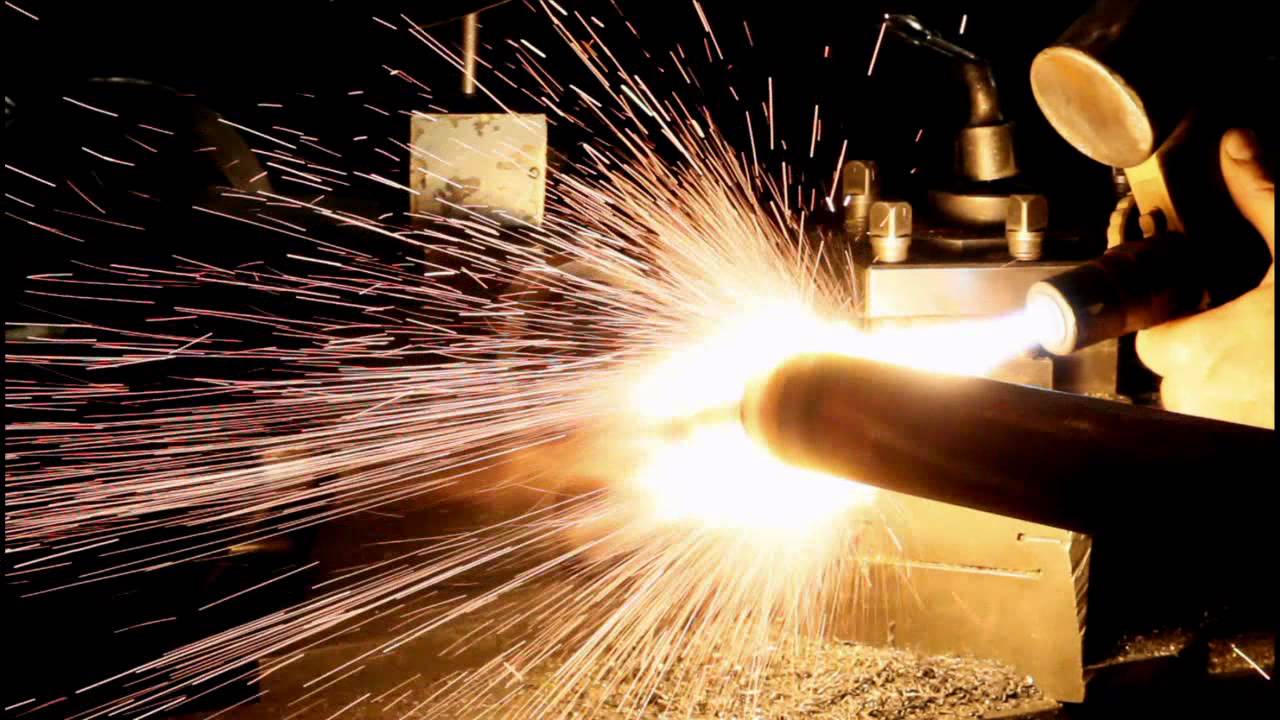The spray process is an umbrella name for multiple processes. All involve using a coating material in the form of a wire, rod, or powder that is melted by one of the following sources of energy.
The molten powder, wire, or rod is accelerated and propelled towards the substrate by gas or an atomization jet. The particles build up and coat the material.
Processes:
- Flame and Arc Welding (also called TSA, TSZ, TWAS): uses fuel such as acetylene or an electric arc to create required heat.
- Plasma Transferred Arc Welding (PTA): uses ionized gas and powder to coat materials
- HVOF (high-velocity oxyfuel): uses pressurized gas combined with powder.
- Detonation Gun Spraying: mix of gas, oxygen, and powder is ignited in a gun barrel
- Cold Spray: Deformable particles are introduced to a supersonic preheated gas stream. Only plastic materials can be used.
The coating can be applied at different thicknesses.
It is used to repair worn components and machine parts or to improve performance and promote longer component life.
Components frequently last 50% to 75% longer when treated.
A quick example of Spray Welding
Process Diagram
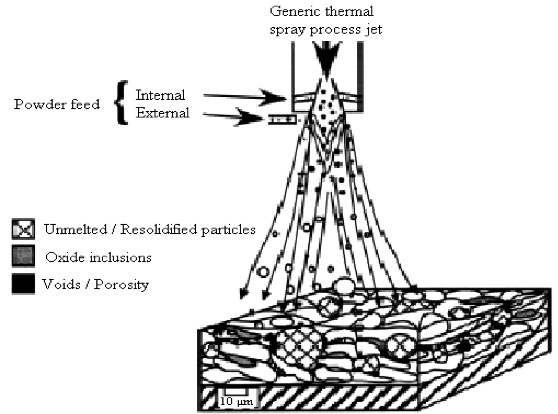
Arc Spray Welding
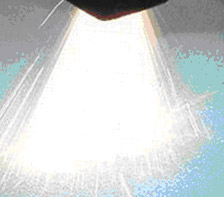
The Arc Spray process uses DC power to energize negative and positive wires, which are fed through a gun head.
The wires arc against each other in the head, creating the heat necessary to create molten metal.
Air that is compressed is introduced into the arc, atomizing the molten metal and then moving the droplets to the material being worked on.
The droplets interlock on top of each other to create the weld or bond.
- Requires Amperage at or above Transition Level (short circuit then globular then spray arc)
- Transition – The point at which the weld pool changes. For example, if the voltage is too low for the ipm, the wire will strike the parent material. By raising the voltage to the transition level, the arc length will be increased to the short circuit transition level.
- In spray arc mode, the wire forms a point (funnel) at the electrode wire end
- Very small droplets are formed and sprayed on the weld puddle
Equipment
- 650 Amp power source
- Positive and Negative Power lead hookup
- Two spools of Zinc, Zn/Al or Aluminum
Process
- Preheat surface to be sprayed (do not pre-heat aluminum, copper, titanium, manganese alloys due to oxide film formation. Best to under heat.
- One wire is energized positive and the other negative
- Wires are fed through a spray welding system
- Both wires meet at the gun head and create an arc
- Dry compressed air atomizes the material and propels it
- The spraying torch much be perpendicular to the surface; otherwise, porosity increases (avoid sharp edges, narrows holes)
Flame Spraying Process
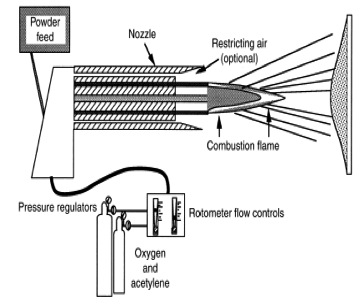
The process uses one of several welding gases for fuel:
- Acetylene
- Propane
- Propylene
Wire or powder is injected into the flame, where it melts and is sprayed onto the work.
Equipment requirements are minimal, and it can be applied off or on-site. It is also inexpensive.
Ignition occurs outside the torch.
The spraying distance is 100 to 200 mm.
Advantages of flame spray include relatively low surface heating (350 to 450C), high deposition rates (60-95%), flexibility, and simplicity of the process.
The downsides of flame welding include low adhesion, high porosity, low heating efficiency, and it is not possible to spray materials with a melting point over 2800C.
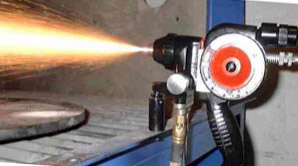
Plasma Spraying Process (PTA)
The plasma spray process was developed to spray ceramics, although plastics and metals can be treated. The process can be automated and requires fewer steps than other spray welding processes.
The plasma spray welding process has the greatest amount of versatility. Here, gas is used (hydrogen, helium, nitrogen, argon) with an electric arc ionizing the gas.
The process operates at over 10,000C, which is hotter than the melting point for metals. The powder is injected into the flame, melted, and moved to the material being sprayed.
The advantages of the plasma transferred arc welding process include that it is easy to apply. It has a bigger size of cermet particles. It has higher wear resistance, low or no porosity, thick coatings, and low heating of the substrate when compared to GTAW.
Disadvantages include high oxidation of sprayed material, and it is impossible to obtain thin coatings of 1mm or thinner.
High Velocity Oxyfuel (HVOF)
High-Velocity Oxyfuel Spray Welding
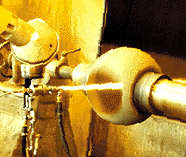
The HVOF process combines gas (hydrogen, oxygen, propylene, air, kerosene), which is injected using high pressure into the torch’s combustion chamber.
Gas achieves supersonic speeds while at the same time powder is injected into the flame. The process provides dense thermal spray coatings with less than 1% porosity.
The result has high bond strength and fine as-sprayed surface finishes. Oxide levels are also low.
The process is used for spraying wear-resistant carbides and alloys (wear or corrosion resistant) such as Iconel, Triballoy, and Hastelloy.
The spraying distance is 380 – 400mm.
The process has high levels of adhesion and low porosity (less than 1%). It supports thicker coatings and has a higher amount of retained carbides when compared to plasma or flame spraying).
It is relatively noisy (greater than 130 dB) with a low deposition rate (35% – 50%). The equipment also tends to be higher in price.
Detonation Gun Spraying
Detonation Gun Spraying Diagram
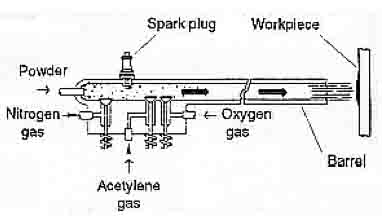
- A mixture of powder, oxygen, and gas is ignited in the gun barrel.
- The barrel is purged by nitrogen between detonations.
- Feed rate is 0,5 to 12 kg/h.
- The spraying distance is 50 to 200mm.
The advantages of the detonation gun spraying process include high adhesion, low porosity (less than 1%), and a high feed rate (up to 12 kg/h). The process has a higher amount of retained carbides when compared to plasma and flame spraying.
Disadvantages include that it is hard to spray materials with a low density such as Iic, high noise (great than 140 dB), has a need for sealed boxes, and a high price.
Detonation Gun Spraying Equipment
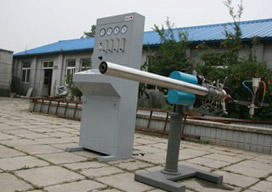
Cold Spray
Cold Spray Welding Process Diagram
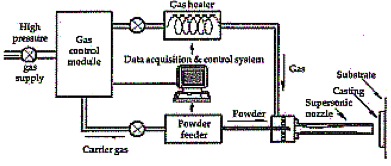
The cold spray process uses deformable particles that are introduced to a supersonic preheated gas stream. The stream is directed onto the substrate. The coating is deposited by an impaction process.
There is no heating of particles (the gas is heated to achieve a higher sonic flow speed).
Only plastic materials can be used.
Comparison of Coating Processes
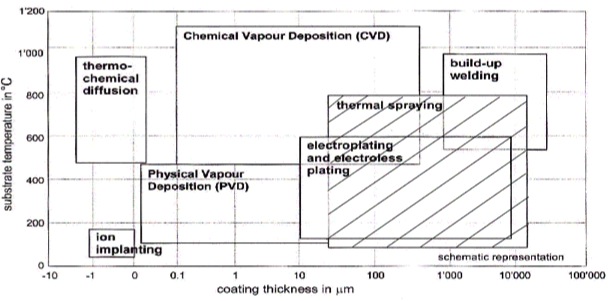
Spay Processes
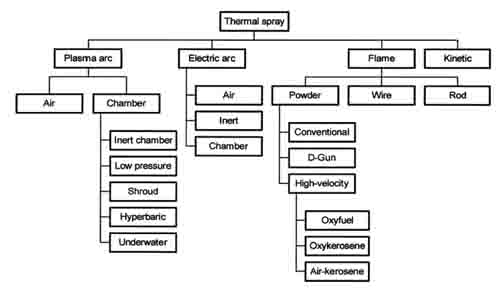
Substrate Preparation Methods
- chemical
- vapor de-greasing
- baking (porous materials are baked at 315-345C)
- ultrasonic cleaning
- dry/wet abrasive blasting
- roughening: 2 hours before spraying with machining, macro-roughening, or dry abrasive grit blasting
Advantages & Disadvantages of Spray Welding
Advantages:
- Smooth Weld Bead
- High Penetration (used on metal 3/16″ or greater)
- High Weld Deposit rates
- Minimal Spatter
- Reduced cost: spray is used to strengthen a lower cost material
- Low heat input: coatings do not penetrate the base material
- Versatile: Most metals, plastics, and ceramics can be sprayed
- Works within a broad thickness range: .001 to .1 inches, can be more than 1 inch thick
- Fast processing speed: spray goes on from 3 to 60 lb/hour (depends on the process being used)
Disadvantages:
- Requires welder training
- Gas Cost can be greater due to higher argon levels ( > 85%)
- Recommended for flat position and horizontal fillets only
- High Heat can cause welder discomfort
- Undercut can be caused, especially on the top edge of welds
- Bonding of coating is mechanical, not metallurgical
- Line of sight process
- Poor resistance of coatings to pinpoint loading
Requirements for Spray Welding
- Requires High Voltages (usually 26 volts To 37 volts)
- Wire Electrode Size: (usually 0.045 or larger required ) – High Amperages (usually 180 Amps To 440 Amps )
- Shielding Gases: At least 85% argon remainder CO2. 92/8 is most commonly used.
- Machine settings can greatly affect the weld.
- High current/heat.
- Small machines are not capable of spray mode.
- Machine duty cycle is an important factor.
- When setting machine parameters (volts/ipm), start with the suggested setting, then manipulate the voltage up or down until the sound is 1/2 “crackle” and 1/2 “whoosh”
Other Welding Methods
See the full list of welding methods here.
